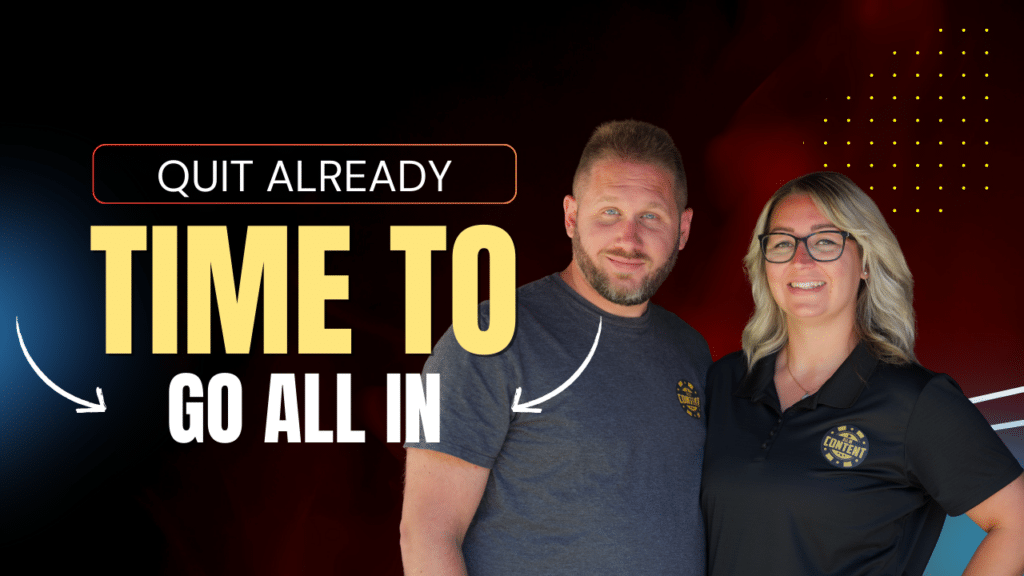This article was originally published on ICMI.com in May 2019
Employee engagement is a hot topic in contact centers and all other industries. Leaders are struggling to motivate and sometimes retain top talent. Far too often, when the once-a-year survey results are bad, people feel the urge to reinvent the wheel. Often these leaders over-engineer solutions to try and drive engagement. Unfortunately, the more complicated the action items, the less likely one would be successful. The problem with engagement surveys is that they don’t get to the root cause either.
In this article, we’ll focus on simplifying employee engagement. We’ll provide you with practical tips to build and enhance your team’s culture, getting to that elusive root cause.
Why Focus On Employee Experience?
Engagement should always be top of mind for all leaders. Unfortunately, though, many leaders are trapped in the day-to-day world of getting stuff done. Look at most leaders’ schedules. Many are stuck in an endless barrage of meetings, leading them to feel too “busy.” All the other items that need addressing often end up trumping employee experience.
If one’s mindset were to shift to placing the employee experience as the #1 priority, leaders would feel more productive instead of just being busy. Ultimately, providing an engaging culture and role for your team helps ensure that employees will take better care of their customers.
6 Ways To Improve Employee Experience & Engagement
1. Provide the basics.
Fair compensation, a culture of respect, and leadership support are table stake items for establishing a great employee experience. These are foundational items that are integral to helping ensure that someone is engaged in the role.
2. Know your people.
To improve engagement, a leader must know their people and what they care about most. Holding regular one on ones with the team is vital to building rapport and trust. These sessions ensure people have a venue to discuss any concerns too.
As a leader, you should know the answers to several essential questions about each of your employees. Knowing answers to the following questions will help improve your understanding of what’s most important to the employee experience:
- Ask employees what keeps them here?
- What do your employees like best about being here?
- Lastly, what would make your employees leave?
3. Have a strategy instead of waiting for the engagement survey results.
A mistake that many leaders make is talking about engagement only after they get their results. To be more proactive, make sure you start with a strategy for how you intend to address engagement. At a minimum, you should have something planned on a quarterly cadence connected to improving the employee experience.
Always have engagement included on the agenda for every team meeting, without outright calling it a discussion on employee engagement. Hold regular focus groups with your team throughout the year, centered around collecting feedback. To know what is going well, what isn’t and what people would like to see changed, run Start, Stop and Continue sessions. Use these sessions to listen, share, and collectively build action items to improve engagement and employee experience.
Employees know what is working and what isn’t at organizations. Using employee feedback effectively to drive new initiatives, you enhance engagement and help make sure employees feel appreciated and heard. Allow team members to drive the changes proposed, using both data and examples from customer feedback to help solidify business cases for continuous improvement. Allowing team members to represent customers’ voice positions them for success in building bridges across the business that result in win/win scenarios for all.
4. Focus on development and offer project work.
Everyone wants to be part of a winning team. It’s important to coach and lead the team to focus on helping everyone operate in their zones of strength. The more team members feel like there is a strong focus on development, the more likely success is multiplied. Everyone wants to win, so focus on helping everyone get better each day. Remember, it’s all about progress. Getting 1% better each day means that you could see a 365% increase at the end of a year.
Enrich the roles of team members too. Regularly review job descriptions, tasks, and responsibilities, looking for ways to make them more exciting, and most importantly, more value-added to the business. Using the insights gained from regularly meeting with team members, build a list of initiatives or projects that some team members might do to lead or tackle. While these projects may pull team members away from queue-based interactions, they will allow for development opportunities while improving engagement. Suppose the plans are genuinely adding value to the business, enhancing either the customer or employee experience. In that case, team members will feel like they are making a difference by improving their connection to the role, team, and organization while elevating their satisfaction and engagement.
5. Recognize and thank others for their contributions.
Acknowledgment is vital as a form of recognition. Take the time to recognize the contributions of team members. It can be quite challenging (and exhausting) to take interaction after interaction. So, whenever leaders and peers can spread the love by recognizing team members, the more positive the environment will become. Sometimes the most important way to acknowledge is merely saying, “Thank You!”
Take the time to catch people doing things right, thanking them for what they do. To keep it top of mind, schedule recognition in your calendar, making it a goal to recognize and thank “x” number of people during that chunk of time. Before you know it, others will start to do the same, creating a culture of appreciation. You can even use video to help spread the positivity and shout outs, especially for remote team members.
6. Have fun.
If budget allows, holding regular team fun events that are unique and different is a great way to bring people together. If there isn’t a budget, you might have informal fun ambassadors on the team and try to coordinate social events and activities that those interested could attend. Remember, for any occasion, think about your remote team members, as well. Suppose you can bring everyone together for formal events with the option or invite for informal events too. In that case, it can make a world of difference.
Find ways to make sure people have fun, either during or after work. Hold competitions and contests that reward team members who excel at doing their jobs. Seek to balance out individual competitions with team ones where everyone can come together, unified, and aligned around achieving an objective. As leaders, you shouldn’t be afraid to potentially make fun of yourself as well in the process, gaining you both greater respect and appreciation from the team. I can’t count how many times I have been hit in the face with a pie. The best was dressing up as the 16-time World Heavyweight Champion professional wrestler, Ric Flair, after my team won a CSAT competition, setting a record for customer satisfaction. Woooooooooooooooo!
Final Thoughts
Suppose leaders can follow these six practical and straightforward ways to improve the employee experience and engagement. In that case, they will not only see improved job satisfaction with employees but improved customer satisfaction and reduced attrition rates. The formula for success shared isn’t about tons of pizza lunches or about spending lots of money. It is about leaders focusing their time on communicating, developing, and prioritizing the employee experience to enhance employee engagement, which ultimately leads to improved customer experience. Focus on improving the employee experience and engagement as your main priority.







